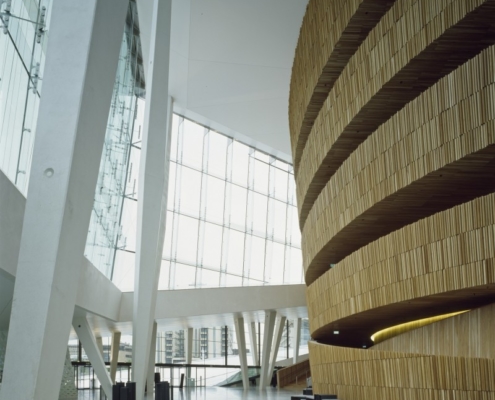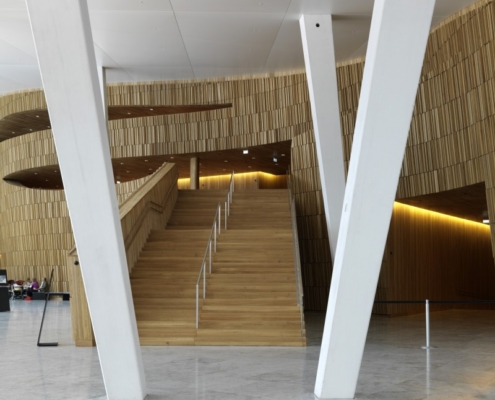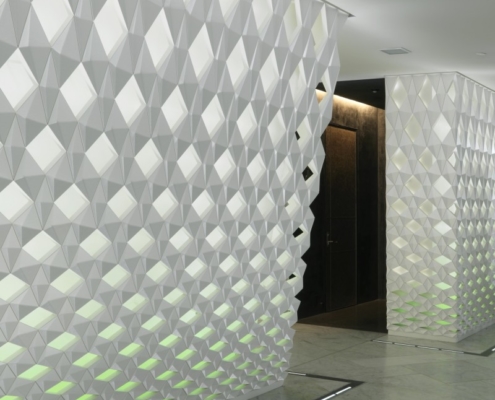Snøhetta’s prize-winning design was characterized by the jury as having strongly identifiable themes that tie the building to its culture and place while also presenting an unusual and unique expression that was in many ways new and innovative. The project developed a highly complex program into a simple general plan that integrated both a practical and intuitive sculptural approach to modeling the exterior form. Its low slung form became a link within the city rather than a divisive sculptural expression. Its accessible roof and broad, open public lobbies make the building a social monument rather than a sculptural one.
The building is as much landscape as architecture and thus fosters public awareness and engagement with the arts. Generous windows at street level provide the public a glimpse of the scenery workshop activities. The building still finds an audience with public who are not opera, ballet or orchestra fans. The cafes and gift shop, with their access to the waterfront are destinations which offer opportunities to generate revenue for the institution while providing a general public amenity. Care was taken with the design of these components so that they are seamlessly integrated into the overall character of the building’s bold design.
Information provided in part by: Snohetta







